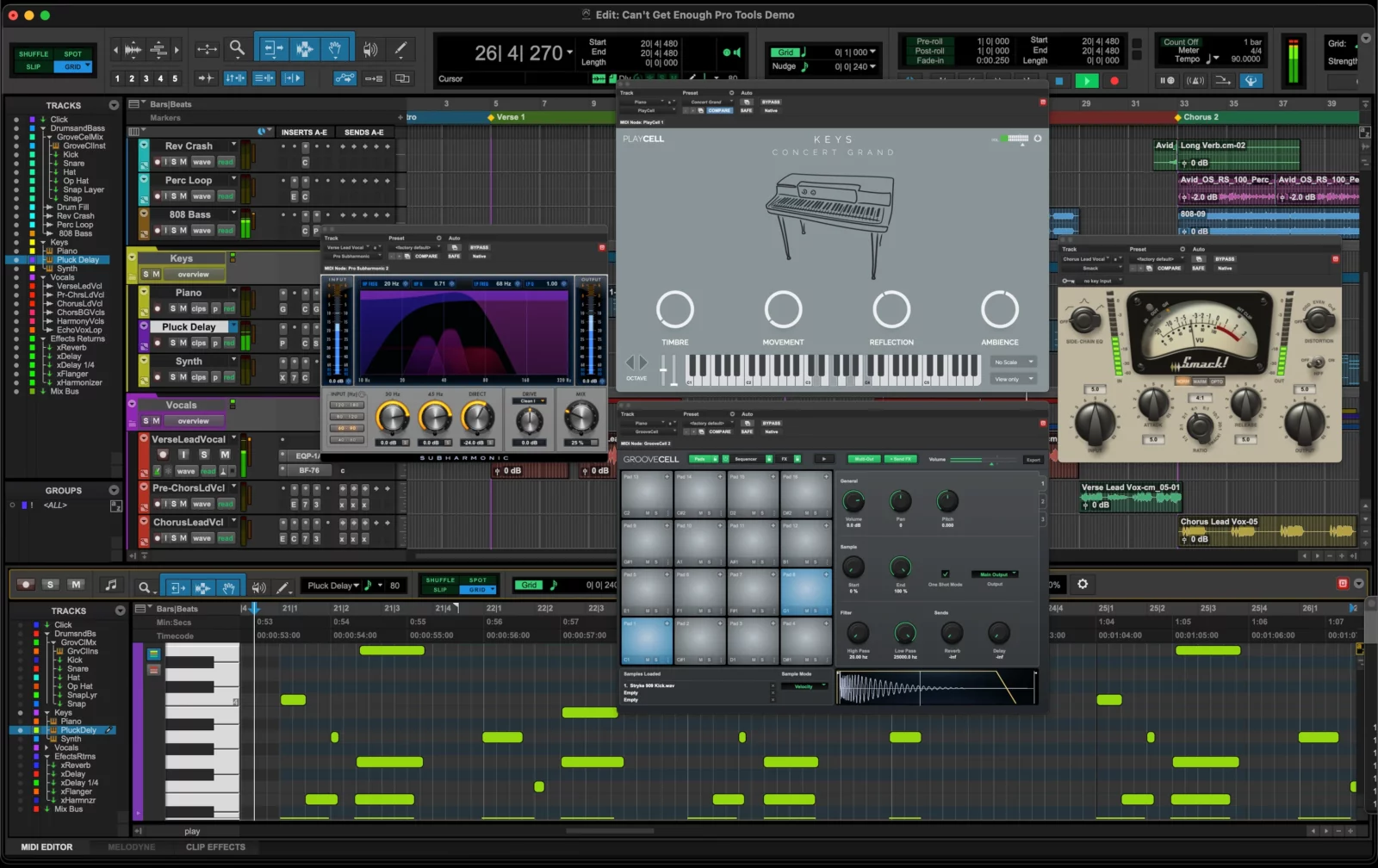Avid Pro Tools – Strengths, Limits and Use Cases Explained

Avid Pro Tools: A Professional DAW Explained
Avid Pro Tools is one of the most established digital audio workstations in professional audio production. It is widely used for recording, editing and mixing music, as well as for post-production in film and television. While many DAWs exist today, Pro Tools still occupies a distinct position in professional studio environments.
This page provides a clear, practical overview of what Pro Tools does well, where it can be limiting, and which type of DAW user benefits most from it.
What Is Avid Pro Tools?
Pro Tools is a DAW available for Windows and macOS that focuses on precise audio editing, advanced routing and professional mixing workflows. It supports audio and MIDI recording, non-destructive editing, automation and integration with external hardware.
Unlike some all-in-one music production tools, Pro Tools is primarily designed around audio engineering tasks rather than beat-based composition or sound design.
Core Strengths of Pro Tools
Professional Audio Editing
Pro Tools is known for its detailed editing capabilities. Features like Clip Gain, Elastic Audio and advanced crossfades allow engineers to make precise adjustments quickly, even in large sessions.
Mixing and Routing Flexibility
Complex routing setups, buses and sends are easy to manage. This makes Pro Tools especially useful for mixing engineers working on multitrack recordings or post-production projects.
Plugin Ecosystem
The DAW uses the AAX plugin format and supports a wide range of third-party effects and instruments. Many professional audio tools are released for Pro Tools first or are optimized specifically for it.
Industry Compatibility
In many commercial studios, Pro Tools is still the default system. Session compatibility across studios and engineers remains one of its practical advantages.
Post-Production Features
Timecode support, video playback, surround sound mixing and ADR workflows make Pro Tools a common choice in film, TV and broadcast environments.
Limitations and Considerations
Pricing Model
Pro Tools uses a subscription-based licensing model. For some users, especially independent producers, this can feel restrictive compared to one-time purchase alternatives.
Learning Curve
The software is powerful, but not immediately intuitive. Users new to DAWs may need time to become comfortable with its workflow and terminology.
System Demands
Large sessions with many tracks and plugins can be demanding on hardware. Stable performance often requires a well-configured system.
Workflow Rigidity
Compared to some modern DAWs, Pro Tools offers fewer options for deep interface customization. Some users find this limiting over time.
Who Is Pro Tools Best For?
Pro Tools is well suited for:
- Audio engineers focused on recording and mixing
- Post-production professionals working with video and timecode
- Studios that collaborate with external engineers or facilities
- Users who value editing precision over creative experimentation
For producers who prioritize fast composition, sound design or loop-based workflows, other DAWs may feel more flexible.
Summary
Avid Pro Tools remains a reliable and respected DAW for professional audio work. Its strengths lie in editing accuracy, mixing control and industry compatibility. At the same time, its pricing, learning curve and workflow style mean it is not the ideal choice for every DAW user.
Choosing Pro Tools makes sense when audio precision, collaboration and established studio workflows matter more than speed or experimentation.










